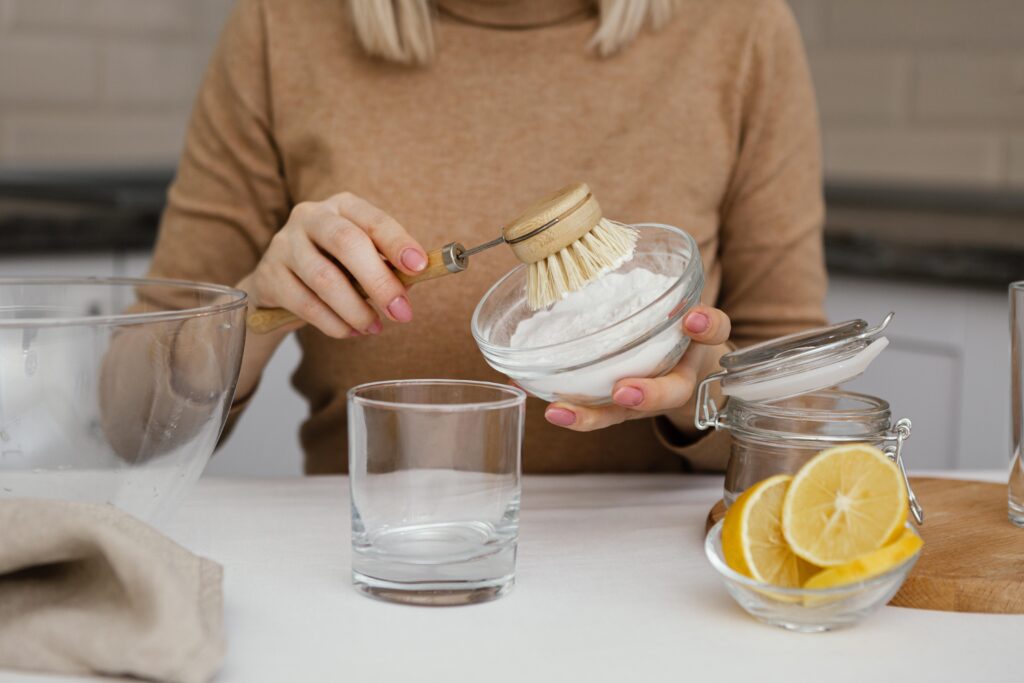Brownies are a dessert classic, known for their fudgy texture and rich chocolate flavor. But what happens when you decide to experiment by adding baking soda to a brownie mix? Baking soda, a common leavening agent, reacts with acidic ingredients to create carbon dioxide gas, causing baked goods to rise. While this works wonders in cakes and cookies, its effect on brownies can be surprising. Let’s explore what happens if you add baking soda to a brownie mix, including its effects on texture, flavor, and how to use it correctly.

What Is Baking Soda and Why Is It Used in Baking?
Baking soda, also known as sodium bicarbonate, is an alkaline leavening agent used to make batters and doughs rise. When combined with moisture and an acid—like lemon juice, vinegar, or buttermilk—it reacts to release carbon dioxide. This chemical reaction creates tiny bubbles, making baked goods lighter and fluffier.
To understand the science behind baking soda, explore this guide on baking soda and baking powder from Serious Eats. It explains how leavening agents impact baking outcomes.
How Does Baking Soda Compare to Baking Powder?
While both are leavening agents, baking soda requires an acid to activate, whereas baking powder contains both an acid and a base. Most boxed brownie mixes don’t include baking soda because brownies are meant to be dense and fudgy, not fluffy. Adding baking soda to brownie mix introduces a significant change, making them more cake-like.
For more tips on using baking soda in desserts, check out The Kitchn’s guide to baking soda.
What Happens If You Add Baking Soda to a Brownie Mix?
Adding baking soda to a brownie mix can alter its texture, flavor, and appearance in various ways. Here’s a breakdown:
1. Texture Changes
- Lighter, Airier Brownies: Baking soda reacts with acidic ingredients in the mix, creating bubbles that make the batter rise.
- Cake-Like Consistency: This extra rise changes the signature fudgy texture of brownies, making them fluffier and less dense.
- Over-Aeration Risks: Using too much baking soda can lead to spongy or crumbly brownies, which lack the rich chewiness many people expect.
2. Flavor Effects
- Bitterness from Baking Soda: If the mix doesn’t contain enough acidic components to neutralize the baking soda, it may leave a soapy or metallic aftertaste.
- Enhanced Chocolate Notes: Balanced amounts of baking soda can reduce the acidity of cocoa powder, intensifying its chocolate flavor.
3. Appearance Changes
- Uneven Rise: Baking soda can cause the batter to rise unevenly, resulting in domed or cracked tops.
- Lighter Color: Reducing the acidity of the cocoa powder may also make the brownies appear slightly lighter in color.
Practical Tips for Adding Baking Soda to Brownie Mix
If you’re curious about experimenting with baking soda in brownie mix, here are some best practices to follow:
1. Start with Small Amounts
- Begin with 1/4 teaspoon of baking soda for a standard boxed brownie mix.
- Gradually increase in future batches, but avoid overusing it.
2. Balance with Acidic Ingredients
Baking soda requires acid to react fully. Add 1 teaspoon of acidic ingredients like lemon juice, vinegar, or yogurt per 1/4 teaspoon of baking soda to balance the flavor.
3. Test with Small Batches
Experiment with a smaller portion of the batter to observe how baking soda affects texture and flavor. Document your results to refine future attempts.
For more troubleshooting tips, explore how to keep brownies from getting hard on top.
Mistakes to Avoid When Using Baking Soda
1. Using Excess Baking Soda
Too much baking soda can result in overly aerated brownies, which may taste metallic or bitter if not fully neutralized.
2. Ignoring pH Balance
If your mix lacks acidic ingredients, the baking soda won’t react properly, leading to a bitter flavor and flat texture. Use natural cocoa powder, which is acidic, to encourage the reaction.
Recipe Variations: Experimenting with Baking Soda in Brownie Mix
1. Fluffy, Cake-Like Brownies
To create lighter, cake-like brownies:
- Add 1/4 teaspoon of baking soda.
- Include 1 teaspoon of lemon juice or yogurt for balance.
2. Slightly Fudgy Brownies
For a balance between fudgy and fluffy:
- Use 1/8 teaspoon of baking soda.
- Add ingredients like nuts or chocolate chips to retain some density.
For more creative ideas, check out how to jazz up boxed brownie mix.
FAQs: Baking Soda and Brownie Mix
Does Baking Soda Make Brownies Rise?
Yes, baking soda reacts with acidic components to release carbon dioxide gas, which causes the batter to rise and creates a fluffier texture.
Can Baking Soda Replace Baking Powder in Brownies?
Not directly. Baking soda requires an external acid to activate, while baking powder contains both acid and base, making it self-reactive.
Why Do My Brownies Taste Bitter After Adding Baking Soda?
This happens when there isn’t enough acid in the mix to neutralize the baking soda. Adding an acidic ingredient like vinegar or lemon juice can fix this issue.
Conclusion
Adding baking soda to a brownie mix introduces an interesting twist, transforming their texture and flavor. Whether you prefer fluffy, cake-like brownies or are simply curious about the science of baking, experimenting with baking soda can be a rewarding experience. Just remember to start with small amounts, balance the acidity, and take notes on your results.
For more brownie hacks and recipes, explore brownie box mix with bananas or get creative with heavenly hash brownies. Happy baking!
